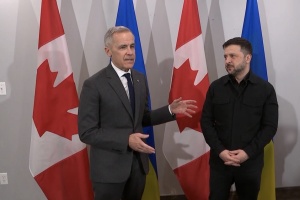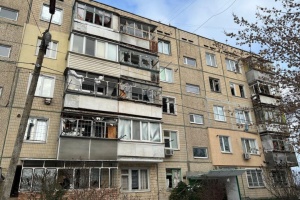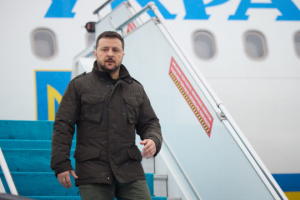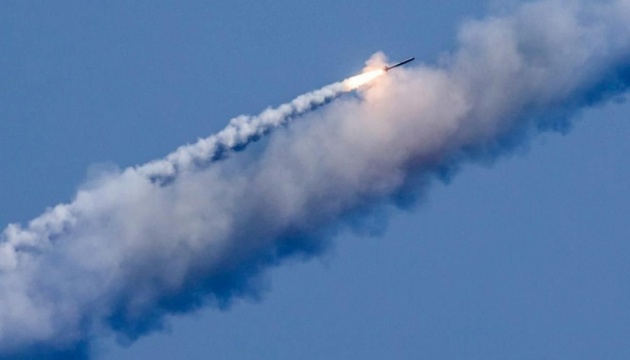
3M22 Zircon: what is known about missile that Russia could have launched at Kyiv
Russia has fired a Zircon anti-ship hypersonic missile at Kyiv. These were the headlines that dominated the news on 7 February after another enemy attack, although the Ukrainian Air Force's report only mentioned the interception of cruise missiles such as X-555, X-101, X-55, X-22, Kalibr, and ballistic missiles such as Iskander and S-300. That is, there is no mention of Zircon.
So where did the information about these missiles come from?
Later that day, a photo of a wreckage found in the Dnipro district of Kyiv with the marking "3M22", which corresponds to the index of the Zircon sea-based hypersonic missile, began to circulate online. This detail was immediately pointed out by military observers in the Defense Express: "The fragmentation of the missile is quite strong and this makes it difficult to identify it, as well as the little information on the Zircon 3M22 that has not been publicly disclosed by Russia."
Was it a missile or not? Let's just say that we currently have only assumptions - neither confirmed nor denied.
"When we see a photo of an unidentified source in some Telegram channels with the inscription 3M22... sorry, it's like a nail scratched on a piece of rubble. It is at least unprofessional to draw conclusions, so let's wait for the experts' conclusions and only then we will be able to say whether the Russians could have used the Zircon MLRS," said Mykhailo Shamanov, a representative of the Kyiv City Military Administration.
Yuriy Ihnat, a spokesman for the Ukrainian Air Force, also commented: "We are conducting an examination, experts are verifying the wreckage.
In any case, we can preliminarily state that if the information about the Zircon missile is confirmed, our air defence system has shot down another of Putin's Wunderwaffe.
However, let's try to find out what is known about the Zircon? What do military experts think about the enemy's possible use of this missile?
What is the Zircon missile?
The 3M22 Zircon is one of the most mythologised new developments in the Russian military machine, and there is very little information about it. It is known that in Russia, Zircon is called a "promising hypersonic anti-ship missile".
The Russians began developing it after 2011 as a potential replacement for the P-700 Granit heavy anti-ship missiles developed in the 70s and 80s of the last century [the Zircon was supposed to be the fastest missile in this segment of the aggressor's armaments] Testing of the missile began in 2016. However, the main demonstration tests - with photos and videos - took place only in 2021, shortly before the invasion of Ukraine: in July, the Zircon missile was launched from the Russian Navy frigate Admiral Gorshkov [the missile allegedly hit a training ground target on the Barents Sea coast], and in October - from the Severodvinsk submarine [the submarine fired a missile from a surface position at a simulated sea target] The Russian army declared both tests successful, and later demonstrated the launch of these missiles several times.
Officially, Russia has not disclosed the characteristics of the Zircon and has not demonstrated it publicly, but at various times it has claimed the following properties of the missile
- range: according to various sources, from 400-600 km to 1000 km;
- flight altitude: 30-40 km;
- flight speed up to Mach 8-9;
- warhead weight: approximately 300 or 400 kg;
- missile length - 8-10 m.
Zircon missiles are launched from 3C-14 vertical launchers that can be mounted on:
- warships,
- submarines,
- mobile ground launchers (in November 2022, the Russian Federation announced the creation of a special ground launcher "Bastion" for Zircon missiles, which was allegedly installed on a four-axle chassis and loaded with two missiles);
- Zircons can probably also be launched from specially adapted stationary ground-based complexes, such as Object 100 in occupied Crimea. This underground coastal missile system, built in Soviet times on the cliffs between Cape Ayia and Balaklava, has never been used in Ukraine. Initially, it was designed to launch 3M44 Progress anti-ship missiles, and after the seizure of Crimea, Russia began restoring the complex, modifying it, and began launching it.
Experts are skeptical about the characteristics of the Zircon and believe that Russia "hit" Kyiv with another missile
"Immediately, everyone who was not too lazy began to interpret the discovery of a piece of aluminium in one of the districts of Kyiv, with a pencil or felt-tip pen marking 3M22, as evidence of the use of Zircon. That is, there is not a factory stamp, but a pencil marking - 3M22," Oleksandr Kovalenko, a military and political observer of the Information Resistance group, commented to Ukrinform.
The expert calls the 3M22 "Zircon" missile "very problematic and crude", meaning that it still needs to be finalised and tested.
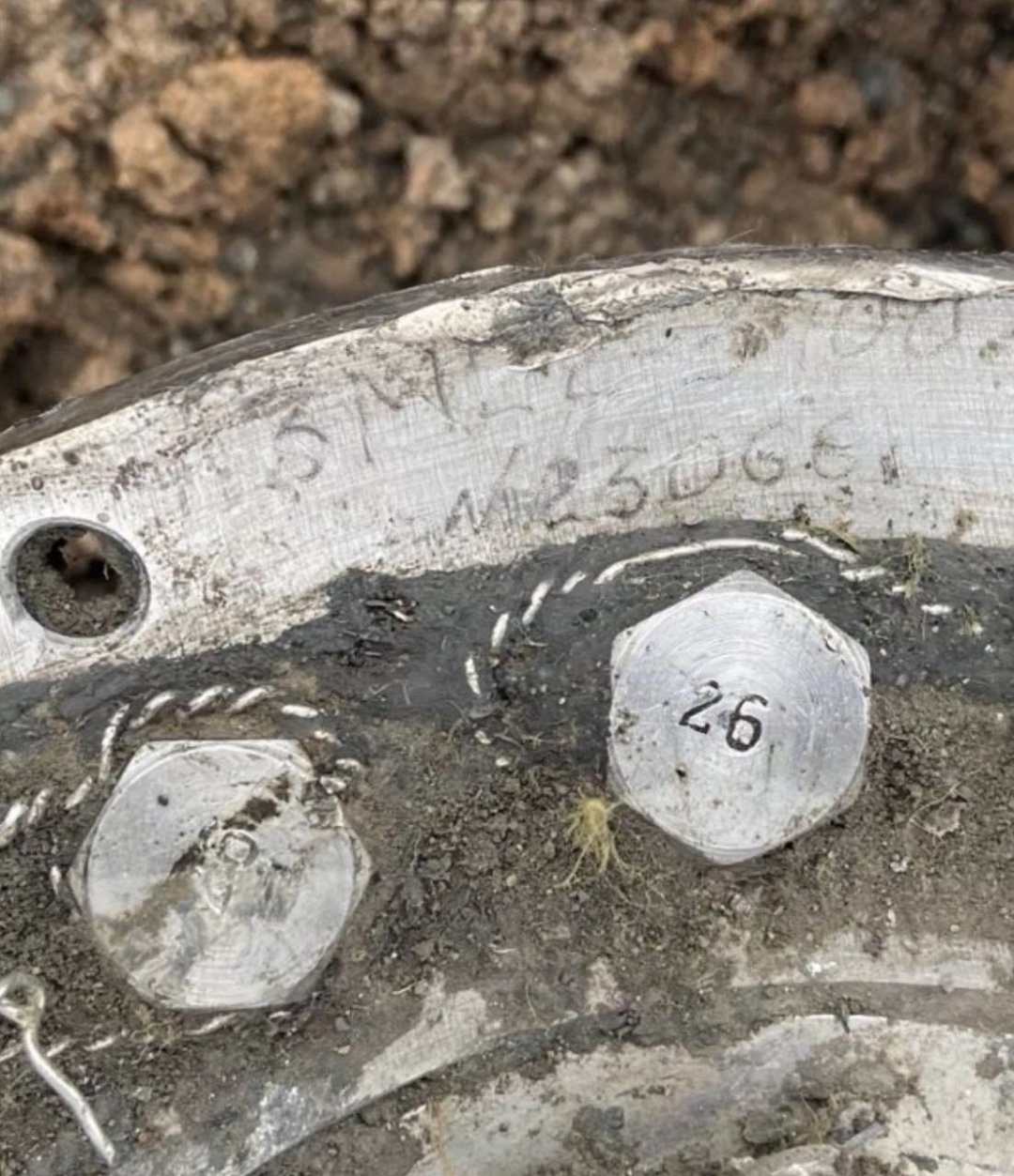
"In terms of characteristics, the 3M22 is a conventionally manoeuvrable hypersonic cruise missile with a central body that generates lift and a solid-fueled upper stage that gives it primary supersonic acceleration, after which a liquid-fueled straight-through jet engine on the second stage accelerates it to hypersonic speeds of Mach 9 or more than 11,000 km/h," says Kovalenko. "The missile has a range of 250 to 500 km at low altitudes and up to 740 km on a semi-ballistic trajectory. If the missile is refuelled with a specific fuel created specifically for it, the range can be increased to 1,000 km."
However, the analyst immediately points out that Russia, as the war in Ukraine has shown, always overstates the official characteristics of its weapons. Therefore, the characteristics of the Zircon can also be questioned. In this context, he recalled the X-47M2 Kinzhal hypersonic missiles, which are critically scarce for the enemy. The Russian Federation cannot establish their mass production because of its catastrophic dependence on foreign microchips.
"The situation with Zircon is the same and even worse. For example, Zircon tests started in 2016, and during this period, 9 launches were carried out. That is 1-2 per year. For intensive testing, the quantitative indicator is not so good," Kovalenko said ironically.
He is confident that 3M22 Zircon was most likely not used in Ukraine.
"The Zircon missile is not a Kalibr. It requires unique launchers and unique carriers. Its promising carriers are currently "half-dead" heavy nuclear missile cruisers of the 1144 Orlan project, namely the inoperable Peter the Great and Admiral Nakhimov, which is undergoing "perpetual repair". This missile can also be used by nuclear submarines of the 885M Yasen-M and 949A Antey projects, none of which are in the Black Sea," the military expert notes.
Similarly, Project 22350M frigates may become promising carriers of the Zircon, but it is in the M modification, the laying of which has not even started. However, Oleksandr Kovalenko does not rule out that a land-based, mobile carrier/launcher could be created for the 3M22 Zircon.
"If you turn on the imagination, it could well be a container type like Club-K - a container complex in a standard 20- and 40-foot ISO container that can accommodate 3M-54KE, 3M-54KE1, Kh-35UE anti-ship missiles or 3M-14KE, Kh-35UE surface-to-surface missiles. But nothing has been said or reported about the integration of the 3M22 into a land-based launcher, even at the level of gossip and conspiracy. And the process of such integration is hardly within the capabilities of the Russian military-industrial complex. It would be difficult for the Kulibins to conceal such an achievement," the expert says.
That is why, in his opinion, it was a 9M723 (Iskander-M) missile, which was assembled using spare parts intended for 3M22.
"That's why we found such an inscription on a piece of metal. It is not uncommon for Russian missiles to use stamps of identical spare parts, which simplifies the manufacturing process," says Oleksandr Kovalenko. - "Given that Russia has been trying to rely on the production of more ballistic missiles in recent months, it is possible that the spare parts intended for the production of Zircon from NPO Mashinostroitelstvo [located in Reutov near Moscow, known as one of the largest developers of missile technology and satellites in Russia, including the Zircon hypersonic anti-ship missiles]
An interesting moment: On the evening of 7 February [the day of another massive Russian missile attack on Ukraine], a powerful explosion occurred near a military training ground near the Russian city of Izhevsk, where the Votkinsk plant is located. Open sources report that this plant is specialised in both civilian and military products. In particular, it produces missiles, including strategic ballistic missiles for the Topol-M and Iskander systems.
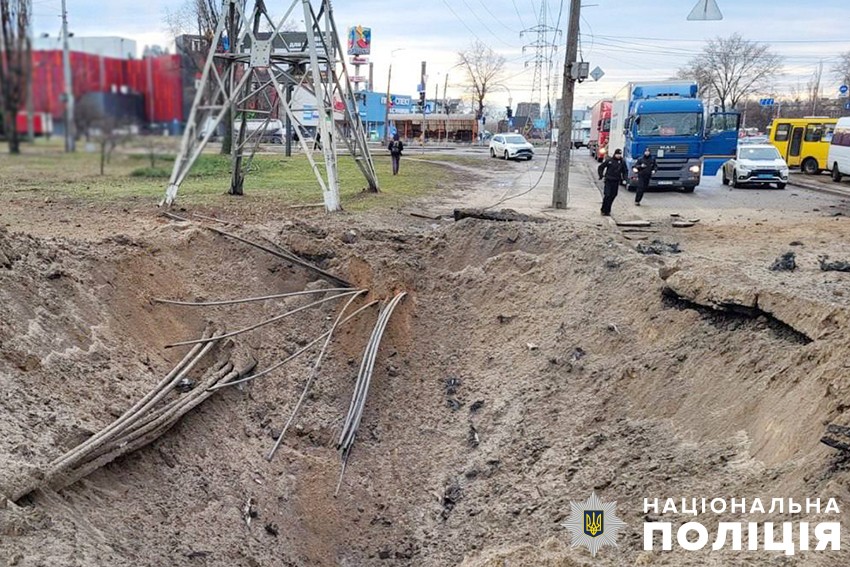
"The characteristics of the Zircon are unknown, but the lying Putin said that this missile has a speed of up to nine mach, which means it is super-hypersonic. In fact, we don't even know if this missile has been officially adopted by the Russian army, although there were reports that there was an order to purchase several dozen missiles in 2023," says Serhiy Zgurets, director of the information and consulting company Defense Express.
Meanwhile, the military expert emphasises that wreckage with the inscription 3M22 was found in Kyiv: "If this is true, we do not know from which launchers it was launched, because formally it was designed to be used from sea platforms. But there were reports that a special launch system was being developed."
But if the information is confirmed...
"In fact, this is the latest hypersonic missile that was created by the enemy to overcome air defence systems, and the experts we spoke to say that the missile was shot down. This means that during this attack, the air defence systems covering Kyiv coped with the enemy's new, most advanced hypersonic missile. But in any case, if the information is confirmed after the conclusions of experts who are now examining the wreckage in more detail, we will have another good example of the effectiveness of the air defence systems that are currently protecting Kyiv. And it will also destroy another myth about Russia's most advanced weapons," said Mr Zgurets.
Aviation expert Kostyantyn Kryvolap noted that the Zircon does not meet the parameters of a hypersonic weapon.
"How hypersonic is it? No more than the Kinzhal. Therefore, it does not meet the requirements for a hypersonic weapon. The Americans, Japanese, Indians, and Chinese are developing hypersonic weapons. But Russia has to be "ahead of everyone else", so it announced that it had created this hypersonic missile. The Russians put it into service in January last year. They signed a contract for the production of the first batch of about 10 missiles, but in May last year, their production had not yet begun," the analyst said.
According to him, Russia was going to re-equip its entire fleet with Zircon missiles in 5 years. The plan was to produce about 30 missiles a year.
"And they tried to do this when there was no such sanctions regime as there is now. Therefore, if we assume that there was a launch of this Zircon, I think that the missile was from the batch that was prepared for testing," added Mr Kryvolap.
He also added that it is not easy to adapt an anti-ship missile to fire at land targets, as it almost requires a new guidance system.
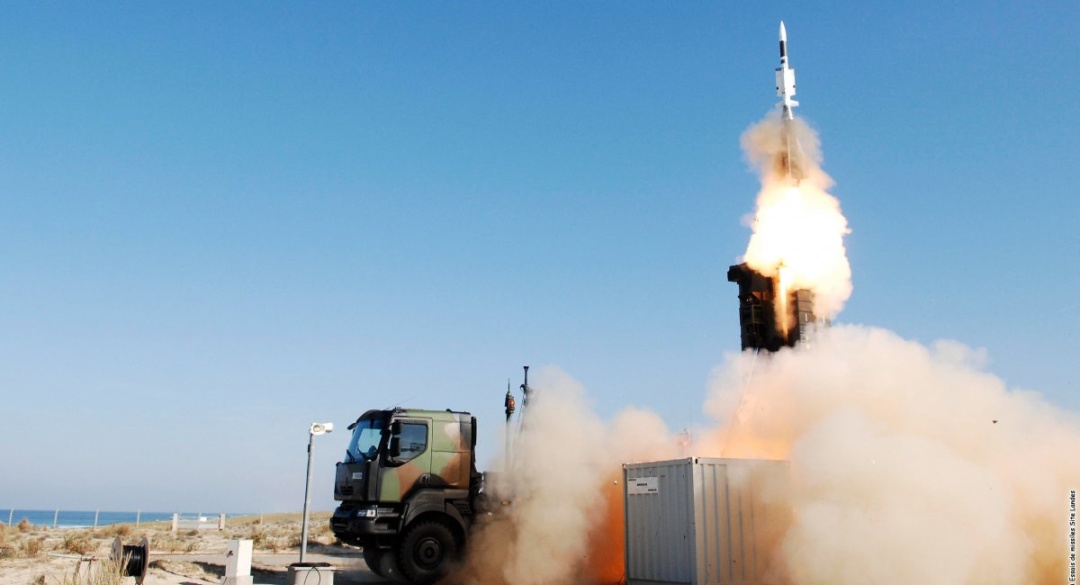
And this is nuclear missile expert Oleksandr Kochetkov: "Could the Zircon missile have been used in the attack on Kyiv? Yes, absolutely. But it should be emphasised that this missile is not something fundamentally new - it causes much more destruction or is harder to shoot down. No, it's not. These are missiles of the same family, so to speak, "Iskanders". They are actually launched from the same type of launchers."
Moreover, Mr Kochetkov says, the Zircon missile is very similar to the Kinzhal missile. They differ only in the launch platform.
"All Ukrainians probably already know that the Kinzhal is launched from a MiG-31K, but it can also be launched from a Tu-22M. But Zircon is launched either from submarines or from shipboard launchers. By the way, they are the same as the ones used to launch Kalibr," the expert points out.
Why Zircons now? Oleksandr Kochetkov believes that the Russians are already having difficulty with Kinzhals - they lack these missiles.
"That is why they are starting to use anti-ship systems. But this does not make a fundamental difference for our anti-aircraft gunners," he stressed.
However, there are other reasons to assume the launch of Zircon - the Russians are testing these missiles in the field, so to speak.
"The Russians have few such weapons, industrial production is not established," says military expert Roman Svitan, "A couple of dozen at most. This is not yet industrial production. Most likely, the missile is still being tested. Maybe on the battlefield as well. There is such a possibility. The North Koreans are also testing their KN-23 missiles on our territory, and we need to understand this."
In general, whether these missiles have been launched or not, we can shoot down Zircon.
"No one has seen this "wunderwaffle" - it exists only in the information flow. As for the speed. It does not have a speed of 9 Mach. It can reach that speed, but only at an altitude of 40 km on the marching part of the trajectory. But when it reaches the target on the final section of the trajectory, it has about 3-4 Mach. That's why modern systems such as Patriot or IRIS-T are quite capable of shooting it down," Roman Svitan summed up.
Myroslav Liskovych. Kyiv

